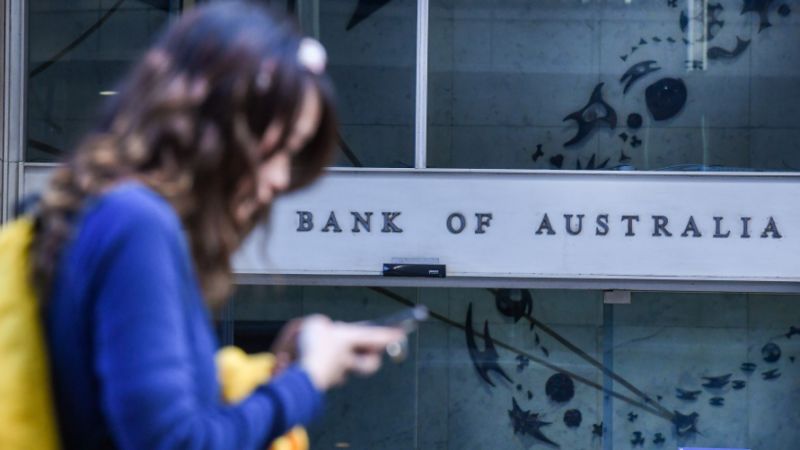The RBA begins a new era. Here’s what to expect

The Reserve Bank of Australia board have met hold a press conference outside of a crisis, and released its full set of economic forecasts earlier than usual.
As a result of an independent review commissioned by Treasurer Jim Chalmers, the bank has made sweeping changes to improve decision-making, debate between board members, and communications.
The bank’s new deputy governor-designate Andrew Hauser will not be present at the first meeting of the year. Hauser has had his work visa approved and has worked at the bank since February 12.
According to Luci Ellis, Westpac chief economist and former RBA assistant governor, every board meeting will follow crucial economic data, such as quarterly inflation or national accounts.
According to Dr Ellis, there will be no dead rubbers under the new arrangements.
There will be enough new information and consequential data for all eight meetings to be considered ‘live’ in principle.”
As a result of softer-than-expected December quarter inflation data, economists expect the RBA to maintain the 4.35 percent cash rate on Tuesday.
The press conferences begin
In preparation for her first press conference with new chief communications officer Sally Cray, a former adviser to Malcolm Turnbull, Governor Michele Bullock spent last week preparing.
Following a board meeting, governor Philip Lowe held a press conference at RBA headquarters in Martin Place, Sydney, to explain extraordinary decisions during the pandemic.
As a result, the bank will increase public communication about monetary policy, which formerly relied on a one-page statement and speeches.
Two-day meeting
Instead of a half-day on Tuesday, the meeting will last for two half-days.
The RBA’s staff will present on Monday from 2pm to 5.30pm on the state of the economy and markets, as well as the outlook.
The board will discuss these issues for about 312 hours, about twice as long as previously. “This is not about giving longer presentations but about giving members more time to discuss, probe, and explore,” Ms Bullock said in November.
This will allow members to reflect overnight and raise any further issues or questions before the policy decision is made, according to Ms Bullock.
In the four-hour meeting on Tuesday, members will also refine post-meeting communications to appear in a written statement from the board rather than a governor-only statement.
Forward-looking forecasts
On Tuesday, a separate and more detailed Statement on Monetary Policy (SMP) will be released, brought forward from Friday. It contains information on the bank’s latest assessments of emerging issues, as well as forecasts on economic variables such as inflation, unemployment, and growth.
To make the new SMP more reader-friendly, it will be abridged slightly.
The de-identified board votes won’t be released until a new monetary policy board and separate governance board are formed around the middle of the year.
It is possible for the new communications and board changes to “add noise”, according to JPMorgan economist Ben Jarman.
Ian Macfarlane, a former governor, warned that the overhaul could result in “radical” changes to monetary policy.

Board appointments
Paul Bloxham, former RBA official and chief economist at HSBC, said the changes were major adjustments for the RBA’s monetary policy process.
It will take time to discern how the big changes to RBA internal processes will affect the monetary policy reaction function, even once the new board has been announced.
As of now, Dr Chalmers has appointed former Fair Work Commission president Iain Ross and former AustralianSuper chairwoman Elana Rubin.
Selwyn Cornish, RBA historian, said a review of the bank’s archives suggested the bank had never met on a Monday.
Commonwealth Bank was both the central bank and a government-owned commercial bank before the Reserve Bank began operations in January 1960, he said.
Due to commercial banking and central banking matters that the board had to address, its board meetings were held on Wednesday and Thursday.
Initially, it appeared the Reserve Bank met on Wednesdays; later, it met on Tuesdays.
Fundamentals unchanged
“Australia’s monetary policy framework is essentially unchanged,” Bloxham said.
The inflation target remains 2-3 percent, the timeframe to bring inflation back to target remains flexible, and the cash rate is the main tool for achieving it.
In fact, once the legislation associated with the review is passed, likely early this year, the RBA’s independence will be even more explicitly protected.”
Former RBA insider Dr Ellis said the changes “will not hurt, but it isn’t clear they will make a major difference”.
A challenge for Ms Bullock at Tuesday’s press conference may be navigating “gotcha” questions from some journalists.







